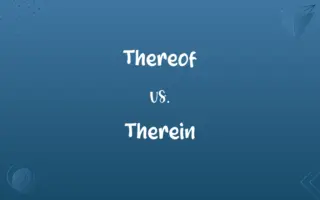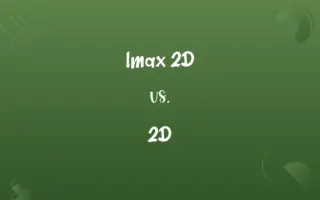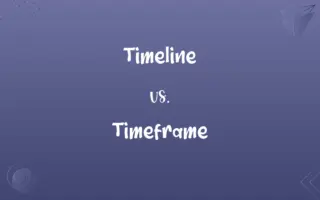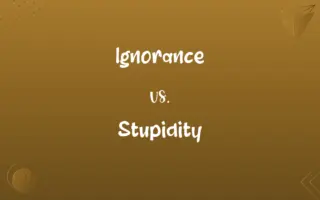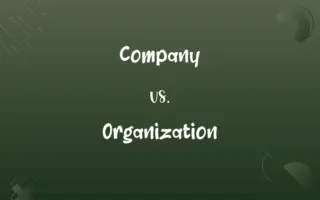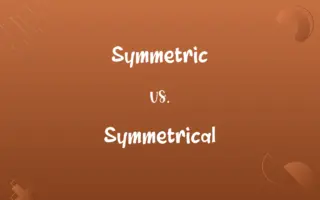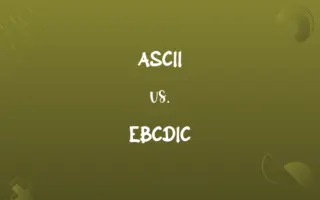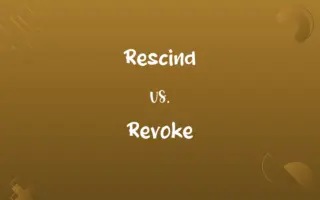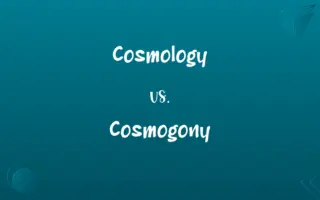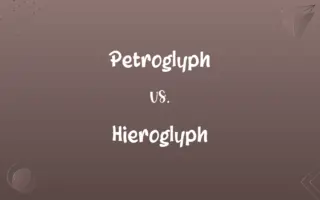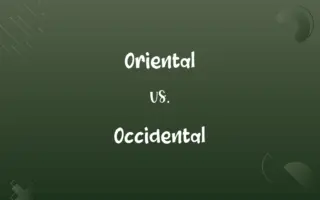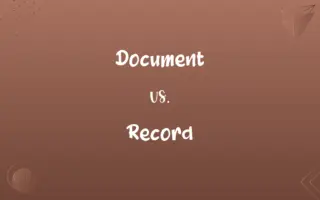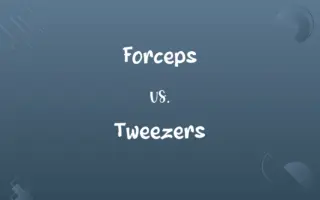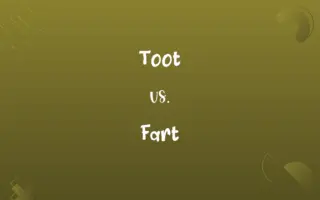Fuzzification vs. Defuzzification: Know the Difference

By Dua Fatima & Shumaila Saeed || Published on September 11, 2024
Fuzzification converts crisp values into fuzzy sets; defuzzification does the opposite, transforming fuzzy sets into crisp values. Both are key in fuzzy logic, bridging real-world data with fuzzy system processing.

Key Differences
Fuzzification is the initial step in a fuzzy logic system where real-world numerical inputs are converted into fuzzy values through membership functions. Defuzzification, conversely, is the final step in a fuzzy logic system.
Dua Fatima
Sep 11, 2024
Fuzzification process allows for the handling of uncertainty and imprecision in data, making it possible to apply fuzzy logic rules. For example, temperature readings in a climate control system are converted into fuzzy terms like "cold," "warm," or "hot," each represented by a degree of membership in corresponding fuzzy sets. After fuzzy logic rules are applied to the fuzzy input values to determine fuzzy output, defuzzification converts these fuzzy output sets back into a single crisp value. This is essential for providing a clear action or decision in real-world applications, such as setting the speed of a fan in the climate control system.
Shumaila Saeed
Sep 11, 2024
The methods for fuzzification and defuzzification are complementary but serve opposite purposes. Fuzzification deals with the ambiguity of inputs by broadening the interpretation of data into fuzzy sets, whereas defuzzification narrows down the fuzzy conclusion to a precise output value, making the decision-making process applicable in practical scenarios.
Dua Fatima
Sep 11, 2024
Choosing the right fuzzification and defuzzification methods is crucial for the effectiveness of a fuzzy logic system. While fuzzification must accurately represent the input's uncertainty within the fuzzy logic framework, defuzzification must condense the system's conclusions into actionable, real-world decisions, balancing precision with the inherent vagueness of the fuzzy output.
Hifza Nasir
Sep 11, 2024
Understanding the distinction between fuzzification and defuzzification is fundamental to designing and implementing fuzzy logic systems. These processes enable the translation of crisp, quantitative data into qualitative judgments and back, embodying the essence of fuzzy logic's approach to capturing the complexity of human reasoning in computational models.
Hifza Nasir
Sep 11, 2024
ADVERTISEMENT
Comparison Chart
Purpose
Converts crisp values to fuzzy sets
Converts fuzzy sets to crisp values
Shumaila Saeed
Sep 11, 2024
Application
Translates real-world data into fuzzy terms
Translates fuzzy conclusions into actionable decisions
Dua Fatima
Sep 11, 2024
Outcome
Fuzzy values with degrees of membership
Single crisp value representing a decision
Shumaila Saeed
Sep 11, 2024
ADVERTISEMENT
Fuzzification and Defuzzification Definitions
Fuzzification
Essential for applying fuzzy rules.
Determines how rules like If warm then fan speed medium apply.
Shumaila Saeed
Feb 26, 2024
Defuzzification
Concludes the fuzzy logic process.
Final step before acting on a fuzzy system's decision.
Dua Fatima
Feb 26, 2024
Fuzzification
Reflects real-world ambiguity in data.
Describes physical sensations like warmth or coldness fuzzily.
Shumaila Saeed
Feb 26, 2024
Defuzzification
Ensures actionable decisions.
Translates fuzzy logic conclusions into real-world actions, like adjusting a thermostat.
Hifza Nasir
Feb 26, 2024
Fuzzification
Involves membership functions to assign degrees.
70% warm, 30% hot for a given temperature.
Dua Fatima
Feb 26, 2024
ADVERTISEMENT
Defuzzification
Converts fuzzy output to a precise value.
Determines exact fan speed from medium fuzzy output.
Shumaila Saeed
Feb 26, 2024
Fuzzification
Begins the fuzzy logic process.
Initiates the decision-making in a fuzzy control system.
Dua Fatima
Feb 26, 2024
Defuzzification
Balances precision and fuzziness.
Picks a single temperature setting from a range of comfortable values.
Dua Fatima
Feb 26, 2024
Fuzzification
Converts precise input into fuzzy values.
A temperature of 23°C becomes moderately warm.
Shumaila Saeed
Feb 26, 2024
Defuzzification
Uses methods like centroid calculation.
Finds the balance point of a cool fuzzy set to set temperature.
Dua Fatima
Feb 26, 2024
Repeatedly Asked Queries
How does defuzzification contribute to fuzzy logic systems?
Defuzzification translates fuzzy logic conclusions into precise, actionable outputs, making the system's decisions applicable in the real world.
Dua Fatima
Sep 11, 2024
Can a fuzzy logic system work without fuzzification or defuzzification?
Both steps are essential; fuzzification enables the system to handle imprecise inputs, and defuzzification allows it to produce precise outputs.
Dua Fatima
Sep 11, 2024
What is the purpose of fuzzification in fuzzy logic?
Fuzzification allows fuzzy logic systems to process imprecise, real-world data by converting crisp inputs into fuzzy values.
Shumaila Saeed
Sep 11, 2024
What methods are used for defuzzification?
Common methods include the centroid, bisector, mean of maximum, smallest of maximum, and largest of maximum.
Shumaila Saeed
Sep 11, 2024
Why is fuzzification critical for fuzzy logic's success?
It captures the nuances of human reasoning and decision-making by allowing for a range of possibilities rather than binary choices.
Dua Fatima
Sep 11, 2024
How do fuzzification and defuzzification handle uncertainty and precision?
Fuzzification embraces uncertainty by accepting imprecise inputs, while defuzzification ensures precision by deriving clear, decisive outputs.
Hifza Nasir
Sep 11, 2024
Is it possible to automate fuzzification and defuzzification?
Yes, these processes are integral to fuzzy logic systems and are automated within the system's framework.
Dua Fatima
Sep 11, 2024
What challenges arise in fuzzification and defuzzification?
The main challenge is accurately representing the input's ambiguity and effectively translating fuzzy logic conclusions into specific actions.
Shumaila Saeed
Sep 11, 2024
How do fuzzification and defuzzification impact system performance?
They directly affect the system's ability to process uncertain data and produce reliable, understandable outputs, influencing overall effectiveness.
Hifza Nasir
Sep 11, 2024
Can defuzzification methods affect the outcome of a fuzzy logic system?
Yes, different defuzzification methods can lead to different outputs, impacting the system's decisions and actions.
Dua Fatima
Sep 11, 2024
How do you choose the right defuzzification method?
The choice depends on the system's goals, the nature of its outputs, and the specific requirements of the application.
Dua Fatima
Sep 11, 2024
What role do membership functions play in fuzzification?
They determine the degree to which inputs belong to each fuzzy set, shaping the system's interpretation of data.
Dua Fatima
Sep 11, 2024
What are the practical applications of fuzzification and defuzzification?
They are used in control systems, decision-making processes, and any application requiring handling of imprecise data.
Hifza Nasir
Sep 11, 2024
How does the complexity of fuzzification and defuzzification affect a system?
Higher complexity can lead to more nuanced decisions but may require more computational resources and refined algorithms.
Dua Fatima
Sep 11, 2024
What advancements have been made in fuzzification and defuzzification techniques?
Research continues to refine these processes, improving accuracy, efficiency, and applicability in various fields.
Shumaila Saeed
Sep 11, 2024
Share this page
Link for your blog / website
HTML
Link to share via messenger
About Author
Written by
Dua FatimaCo-written by
Shumaila SaeedShumaila Saeed, an expert content creator with 6 years of experience, specializes in distilling complex topics into easily digestible comparisons, shining a light on the nuances that both inform and educate readers with clarity and accuracy.


